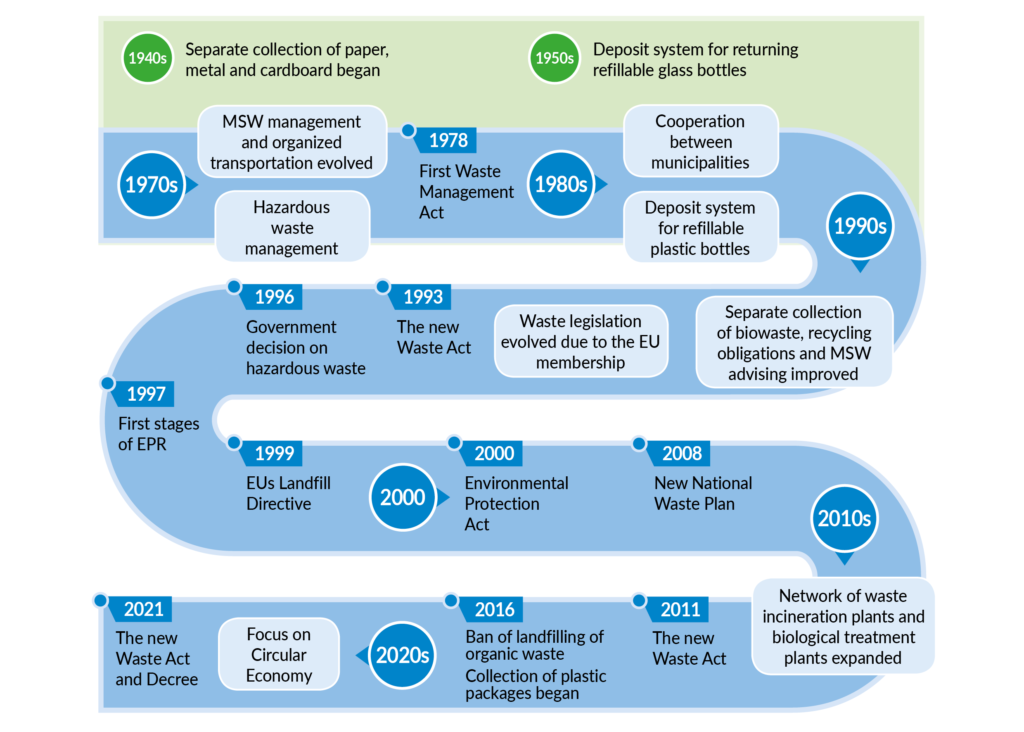History of waste management in Finland
During the history of Finland, waste management has developed as a co-operation between municipalities, private waste companies and producer corporations. The legislation has played a vital part in the development of a modern, holistic and effective waste management system.
Industrialization and urbanization in the early 20th century increased population density. The intrusions caused health problems and waste management had to be arranged. In 1927, the Health Care Act came into force, making it possible to transfer waste management under municipal responsibility. After World War II, population growth and increased consumption created the need for landfills as well as material recycling. Finland has a long tradition of recycling materials, for example, the separate collection of paper, metal and cardboard began already in the 1940s. In 1950s a deposit system for returning refillable glass bottles was introduced. Since then, the materials and types of packaging included in the return system have steadily increased. Still, more than 90% of these beverage packagings with deposits end up being reused or recycled through a return system.
In 1978, the first Waste Management Act came into force, and it started the waste management services and organized transportation of MSW. The following year hazardous waste management was started, as a company called Suomen Ongelmajäte Ltd. was established in Riihimäki. Currently Fortum Plc.’s plant in Riihimäki handles most of Finland’s hazardous waste.
In the 80s, cooperation between municipalities in waste management began. In the 1990s waste legislation evolved due to EU membership. The 1990s were the peak period for the establishment of municipal waste management organizations. The new Waste Act, which entered into force in 1994, accelerated co-operation between municipalities. In the 1990s, the separate collection of bio-waste became more common, and recycling obligations and MSW advising became more efficient.
The Government decision on landfills (1997) and the EUs Landfill Directive (1999) brought landfill construction to the current level, where the environmental impact has been minimized. This also increased the costs associated with the construction of new landfills and led to the closure of old landfills. Later, the restriction of landfilling of organic waste (also called ban of landfilling of organic waste), adopted in 2016, has reduced the landfill of waste, has meant in practice that the landfilling of mixed waste has been stopped.
Starting from the 2000s, the Finnish waste-to-energy field has been developed. In the 2010s, the network of both waste incineration plants and biological treatment plants has expanded strongly. The change in producer responsibility for packaging waste brought a new network for the separate collection of recyclable materials, the RINKI eco take-back points. In 2016, the collection of plastic packages began.
The next Waste Act came into force in 2021. It is based on the revised EU Waste Directive in 2018, which aims to reduce waste and increase reuse and recycling. Due to the new Waste Act, the recycling targets for different waste fractions has tightened and separate collection has intensified. Today, the transition to the circular economy is one of the main priorities in the waste sector in Finland.
History of waste management development in Finland from 1940s to 2021.


